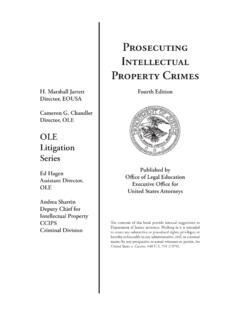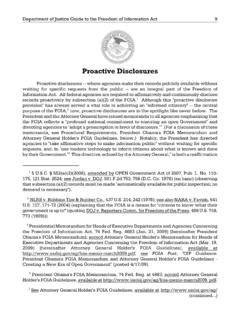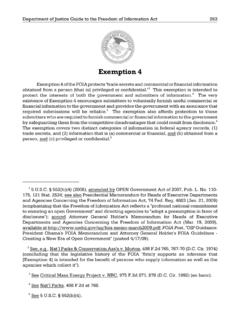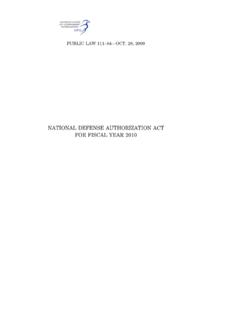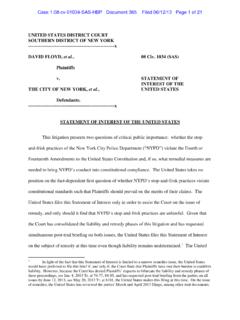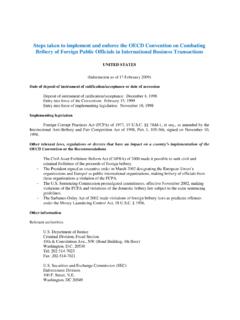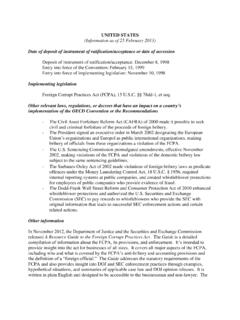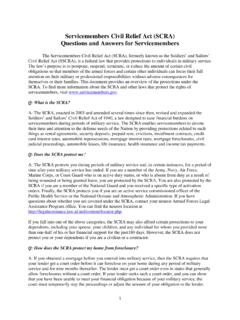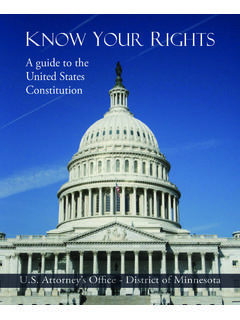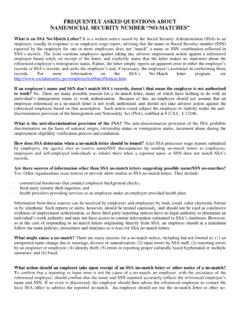Transcription of Organized Crime - United States Department of Justice
1 Organized Crime In This Issue Responding to the Threat of International Organized Crime : A Primer on November Programs, Profiles, and Practice Points..1. 2012 By Thomas P. Ott Volume 60. Number 6 Glecier Format Conspiracy and the RICO Act.. 25. United States By Jerome M. Maiatico Department of Justice Executive Office for United States Attorneys The National Anti-Gang Task Force and the Special Operations Washington, DC. 20530 Division.. 35. H. Marshall Jarrett By John J. Sieder Director Contributors' opinions and statements should not be Combating the Organized Crime Threat to the Healthcare System: considered an endorsement by Learned from Eurasian Organized Crime Prosecutions.
2 37. EOUSA for any policy, program, or service. By Rebecca Pyne The United States Attorneys'. Bulletin is published pursuant to 28. CFR (b). Use of Experts in Gang Prosecutions.. 52. The United States Attorneys'. By James M. Trusty Bulletin is published bimonthly by the Executive Office for United States Attorneys, Office of Legal Proffer Agreements..58. Education, 1620 Pendleton Street, Columbia, South Carolina 29201. By David Jaffe Managing Editor Jim Donovan Legal Assistant Carmel Matin Law Clerk Jeremy Summerlin Internet Address reading_room/foiamanuals. html Send article submissions and address changes to Managing Editor, United States Attorneys' Bulletin, National Advocacy Center, Office of Legal Education, 1620 Pendleton Street, Columbia, SC 29201.
3 Responding to the Threat of International Organized Crime : A Primer on Programs, Profiles, and Practice Points Thomas P. Ott Deputy Chief for International Organized Crime Organized Crime and Gang Section The fight against Organized Crime is a top priority of the Department of Justice ( Department ). International Organized criminals, in particular, pose serious threats to the nation's security, from penetrations of our strategic markets to collaborating with terrorists and nations hostile to the United States . Every day, international Organized criminals threaten the lives and properties of citizens by committing every imaginable type of serious Crime , from sophisticated cyber crimes to trafficking in human beings, the theft of intellectual property to money laundering, traditional rackets, and labor racketeering, all protected by a vicious cycle of corruption and violence.
4 At the same time, despite great successes achieved by the Organized Crime Program, La Cosa Nostra continues to wield powerful criminal networks in certain cities and threaten citizens' peace and prosperity. Dismantling these organizations and rendering them incapable of harming citizens remain among the most important tasks of the Department and of federal law enforcement. Memorandum from Attorney General Eric H. Holder, Jr. Regarding Att'y Gen. Order No. 3206-2010 (Sept. 20, 2010). I. Introduction In recent years, the Department of Justice (DOJ), and the United States government as a whole, has increased its focus on combating the phenomenon that is commonly referenced as international Organized Crime , transnational Organized Crime , or as a slightly broader construct of transnational criminal activity.
5 For purposes of this article, international Organized Crime (IOC) will be used. Experts from various fields, including law enforcement, intelligence, finance, foreign affairs, and academia, agree that the IOC poses a significant threat to the country. They also share a common understanding that this threat must be aggressively addressed using a multi-discipline approach to effectively thwart IOC. The resulting strategies aim to cut off organizations from the illicit profits, protect financial institutions and other strategic sectors from corrupt penetration, enhance intelligence and information sharing, promote international cooperation and rule of law through diplomatic channels, and strengthen the interdiction, investigation, and prosecution of crimes that cross United States borders.
6 While federal prosecutors may applaud the news of these high-level efforts, they may as a practical matter be left asking, What does it all mean for me in the field? Helpful information regarding the nature of the IOC threats, the characteristics of the organizations, and the strategies and programs that are relevant to prosecutors are detailed throughout several lengthy documents. Some of those documents N O VEM BER 2012 U NITED S TATES A TTO RN EY S ' B ULLETIN 1. are summarized in this article. Moreover, it is generally recognized that IOC is fairly amorphous it emanates from places around the globe, manifests hierarchical structures to loose networks, and involves a wide-range of crimes, including public corruption , sophisticated frauds, counterfeiting, cybercrime, narcotics trafficking, money laundering, alien smuggling, violence, and even the facilitation of terrorism.
7 The inherent challenges of investigating and prosecuting IOC cases are compounded by the fact that United States Attorneys' offices (USAOs), Main Justice , and law enforcement agencies are generally divided into specialized components that are focused on particular types of Crime , while IOC groups are diversified in their activities and mobile district and national boundaries are ignored. Accordingly, to successfully disrupt and dismantle IOC groups, federal prosecutors must work collaboratively and be prepared to follow two approaches: (1) pursue all reasonable tactics in cases that target a known IOC.
8 Group, and (2) recognize that a seemingly discrete or benign offense may actually be part of a larger pattern of activity by an organization that merits further investigation and coordination. This article intends to assist prosecutors in this challenge by providing a perspective on the Organized Crime threats as they exist today, giving an overview of certain IOC programs and strategies that prosecutors may encounter and seek to utilize, and offering a general description of the common characteristics of IOC groups. It also clarifies and promotes the extraterritorial application of RICO and briefly reminds prosecutors of other key statutes and resources that can be helpful in the successful litigation of all international cases.
9 II. The evolution of Organized Crime : new threats prompt new strategies Traditionally, the greatest Organized Crime threat to the United States has been the Italian- American Mafia, also known as La Cosa Nostra (LCN). For decades, the corrupt influence of the LCN. plagued various sectors of American society and the economy. Unfortunately, for many years the federal government failed to even recognize the existence of the LCN and was therefore slow to respond to the LCN's extensive criminal activities in a comprehensive manner. See HOWARD ABADINSKY , Organized . CRIM E 191-92 (3d ed.)
10 , 1990 Burnham, Inc.). However, that reticence began to change following the 1951. televised hearings by Senator Estes Kefauver, Chairman of the Senate Select Committee to Investigate Organized Crime in Interstate Commerce. These hearings brought widespread public attention to the threat of Organized Crime in the United States . Likewise, the New York State Troopers' historic 1957 raid of the meeting of mob leaders in Apalachin, New York, crystallized the scope of the Mafia's threat and prompted new strategies for federal law enforcement. One of these responses was the creation of the Department 's Organized Crime Strike Forces in 1961 by Attorney General Robert F.
